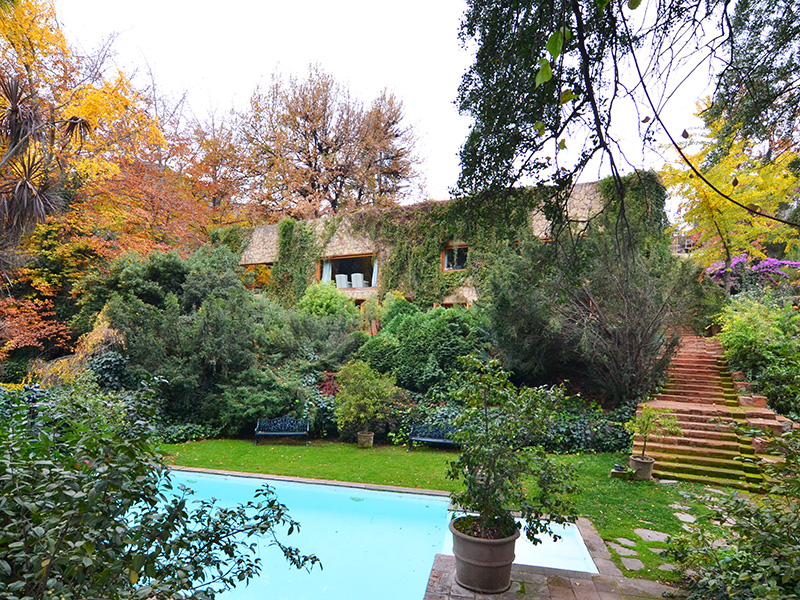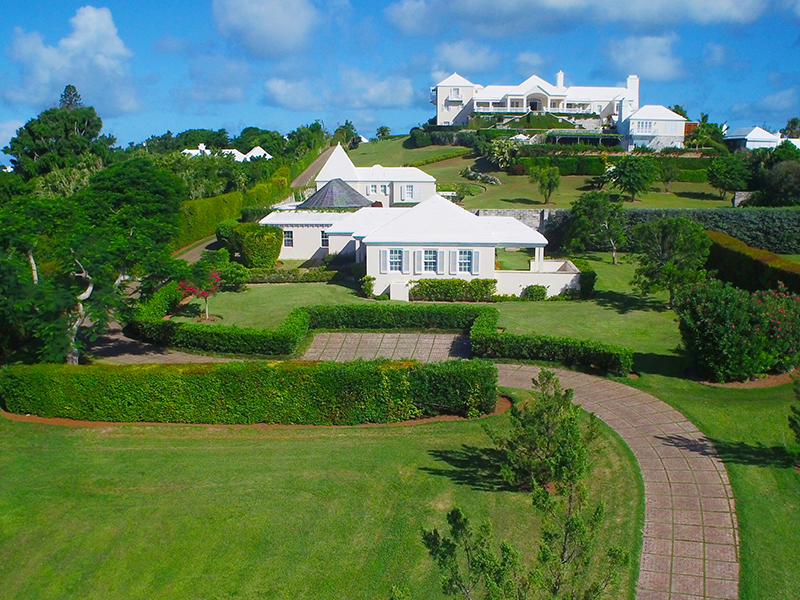Green and Glorious: How to Create an Eco-Garden
An eco-friendly garden design requires careful planning and responsible management, but looked after well, offers great rewards—for us and the environment
An eco-friendly garden design requires careful planning and responsible management, but looked after well, offers great rewards—for us and the environment
Given that most gardens involve earth, air, and water, as well as living plants and wildlife, they should, by their very definition, be environmentally friendly. Yet that isn’t always the case. A desire to control nature with the application of chemicals, an inclination to subvert climate with excessive irrigation, or a determination to compose an environmental illusion with an over-abundance of hard landscaping can all create an effect that is far from ecologically sound.
In reality, an eco-garden should simply be a space that has been designed and executed in empathy with the surrounding landscape, working “with” rather than “against” nature—an effect that is ideally self-sustaining without the need for daily irrigation, and able to evolve in tune with the cyclical rhythms of the seasons. “Right plant, right place” is an important factor, as is the impact the garden has on local wildlife, the environment, and on people’s lives.
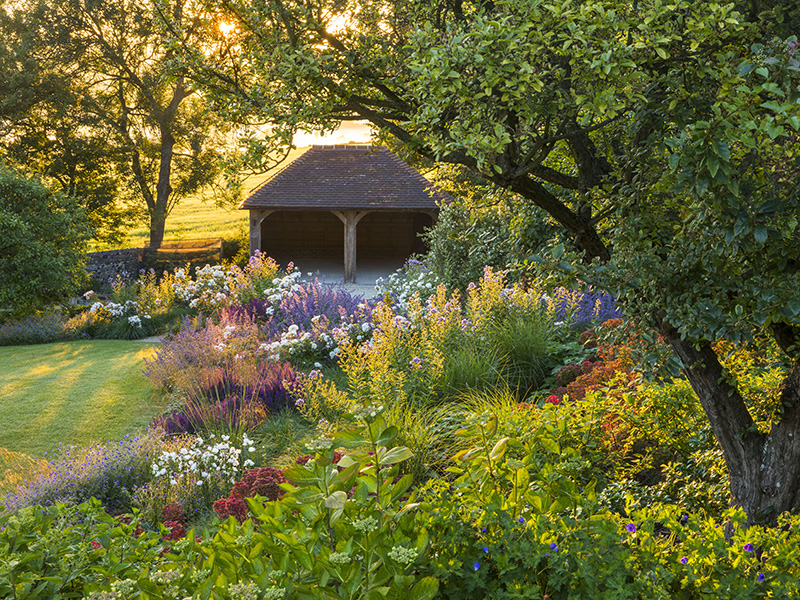
Bernard Trainer, an Australian landscape architect who has practiced in California for the past two decades, describes his design approach as “appropriate and authentic,” an ethos that considers not just the look of the resulting garden, but the resources required to grow plants there.
“If you design responsibly, effectively it’s an eco-garden,” observes Debbie Roberts of Acres Wild, a British design duo that operates in Europe and the United States. London-based landscape designer Emily Erlam, who created an outstanding eco-garden in England’s only desert landscape, Dungeness in Kent, also favors a “light touch.”
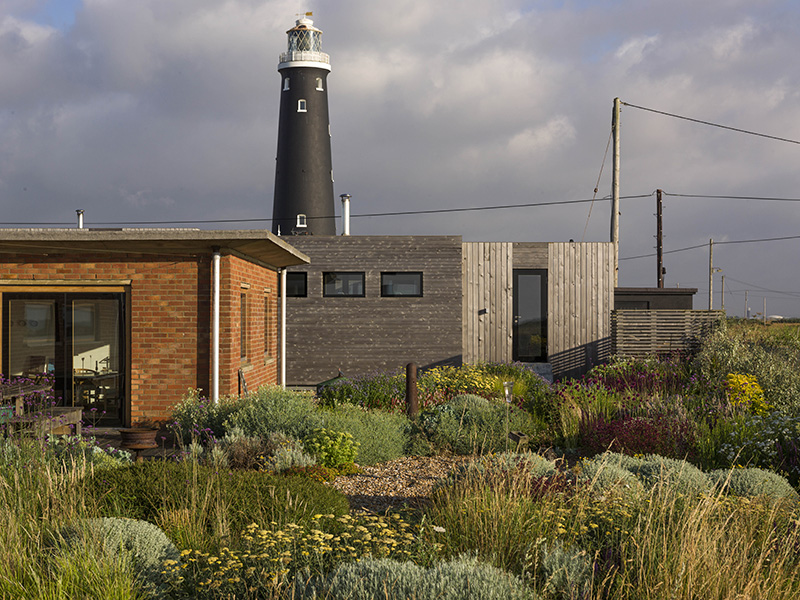
“For me, that means creating a beautiful garden without removing or bringing in lots of materials,” she explains. “And if we do choose to bring them in, my hope is that they will be crafted and laid beautifully with the intention of being there for many years to come.”
The use of chemical-rich herbicides and fertilizers is also incompatible in an authentic eco-garden. “We only use organic pest and disease control agents and organic fertilizers because they’re better for both the environment and the people using them,” says Amber Scott Freda, a landscape designer in New York. “Artificial fertilizers tend to destroy micro-organisms and earthworms which, over time, can result in a dead soil that won’t sustain healthy plants.”
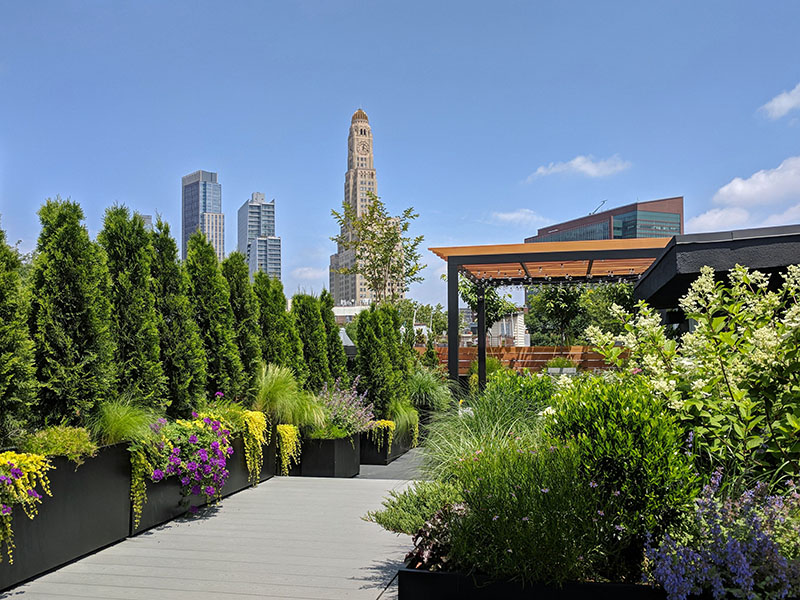
At their simplest, the primary considerations in an eco-garden are water, plants, and landscaping materials. Using water ecologically means many things: encouraging moisture to seep into the ground via permeable paths, capturing and recycling rainwater, and creating rain gardens—shallow landscaped depressions planted with moisture-loving plants that hold excess rainwater until it gradually soaks into the soil.
A tiled or fiberglass pool can be exchanged for a swimming pond with natural plant-based filtration, and drip irrigation systems linked to a rain barrel or cistern, which utilize much less water than pop-up sprinklers.
Smart planting is crucial, too. There’s a desire to embrace local and indigenous varieties, but nature is not as discerning about plant providence as you might think.
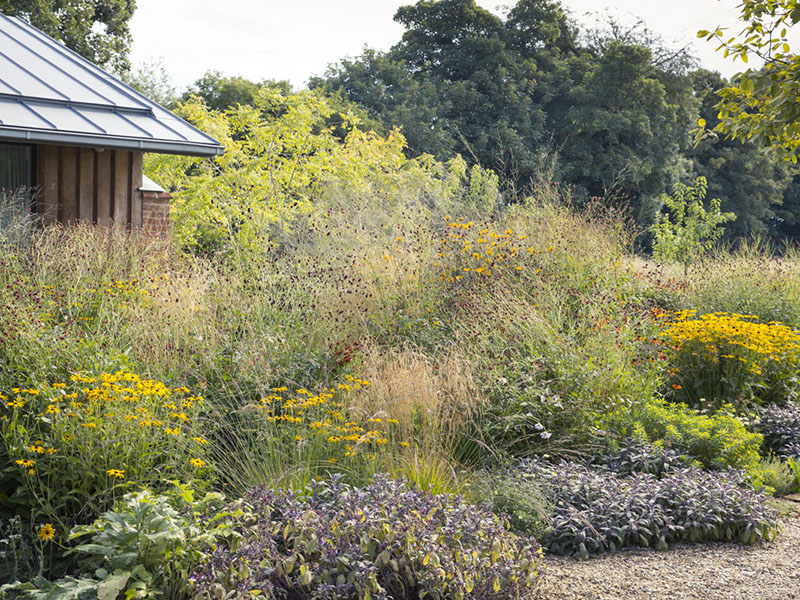
“A sensible palette takes a global ethic,” is how Pennsylvanian horticulturist Rick Darke describes his approach to plant selection. That means choosing plants—not necessarily natives—that suit the location, taking position, climate, and soil type into account. For example, trees that cope well with low rainfall include California live oak, Monterey pine, and Monterey cypress.
You also need flowers that are rich in pollen and nectar to sustain birds and pollinating insects. Bees, in particular, adore borage, lavender, echinacea, verbena, and salvia. Compost where you can, to nourish your soil later, and seed heads can be left in place to sustain wildlife.
Genius loci—a sense of place—should be what every good garden design strives for
Even city rooftops can be greened up in an eco-friendly way, says Scott Freda: “Since creating a garden on a roof is a lot like gardening on top of a mountain, in New York City we use plants that grow well in the mountains, like conifers.”
Meanwhile, in New Mexico, Design With Nature’s Paschall Garden is a good example of how to marry contemporary architecture with a shrubby desert environment. A “dry” stream bed, vast boulders, roof-water recycling, and naturalized planting contrast with the geometric lines of the property to produce a balanced, and inherently sustainable, result.
But it’s perhaps the “built landscaping” choices we make that have the most impact. Acres Wild takes an appropriately monastic approach: “We use the absolute minimum of hard landscaping—that’s a really important aspect of our designs,” says Roberts. “And rather than putting in huge retaining walls in a sloping site, we’ll specify a lower wall with a gently sloping planted bank because it’s more ecologically sustainable.”
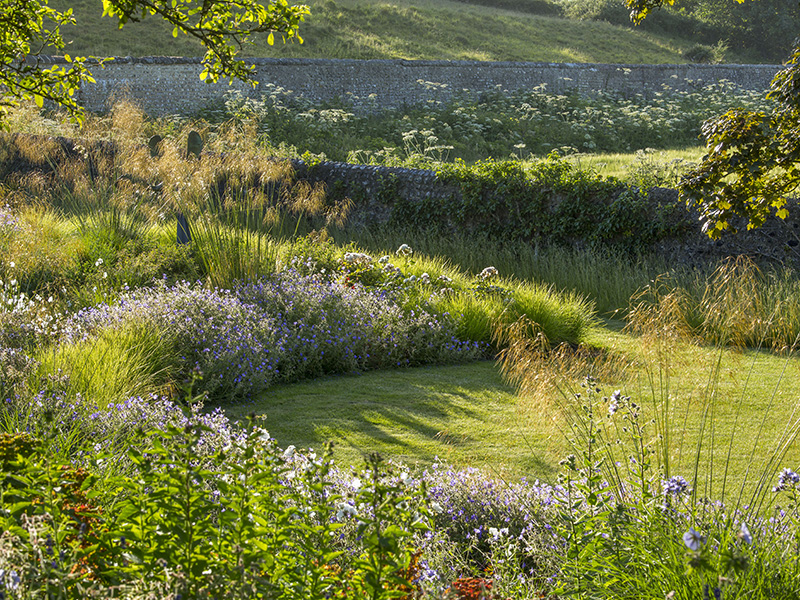
Simple ways to landscape sensitively include avoiding imported materials and choosing locally sourced materials and traditionally skilled craftspeople. Certifiable timber, permeable paving, and natural or recycled materials are good choices, while pine needles, timber chips, grit, and mown areas through lawn grass are all low-impact selections for paths and trails.
Most of all, choose materials that sit well within your own specific landscape. “Genius loci—a sense of place—should be what every good garden design strives for, and it’s not just a visual consideration; it runs much deeper than that,” explains Roberts. This is particularly true of the eco-garden.
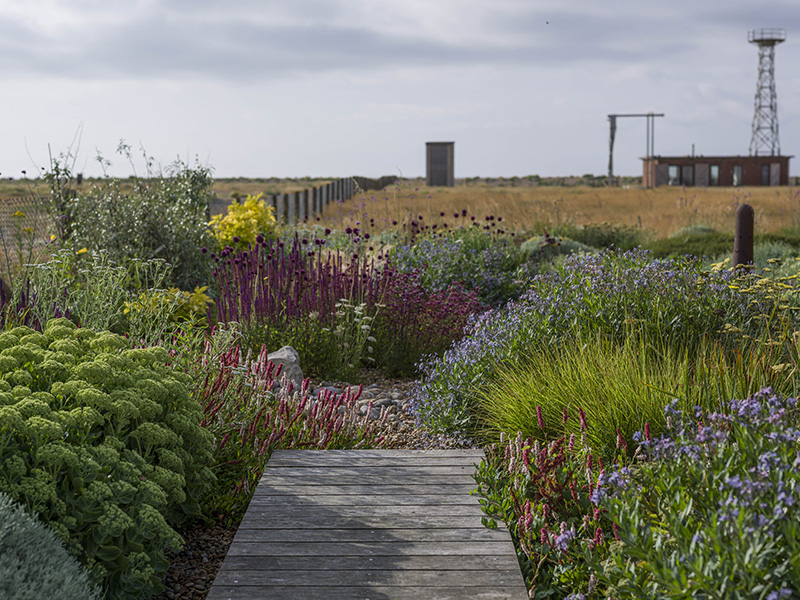
In delivering her iconic Dungeness design, Erlam achieved a truly sustainable result: “The garden was located in a Site of Special Scientific Interest so there were many rules to comply with,” she recalls. “Using local gravel, stones, and wood, alongside gentle hummocks of Mediterranean-style planting, was logical in such a protected site. But it actually turned out to be the very success of the garden because nothing looked out of place or ‘over-designed.’”
And when a garden looks as if it has always been there, unfurling itself gently from the ground beneath, you can quietly congratulate yourself on a job well done.
